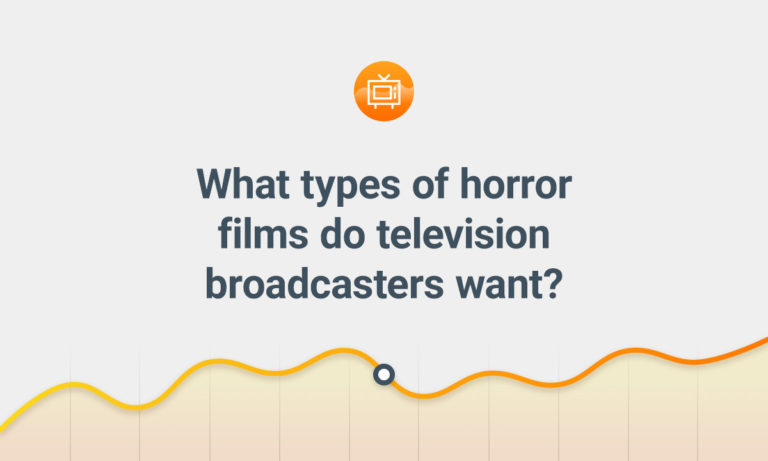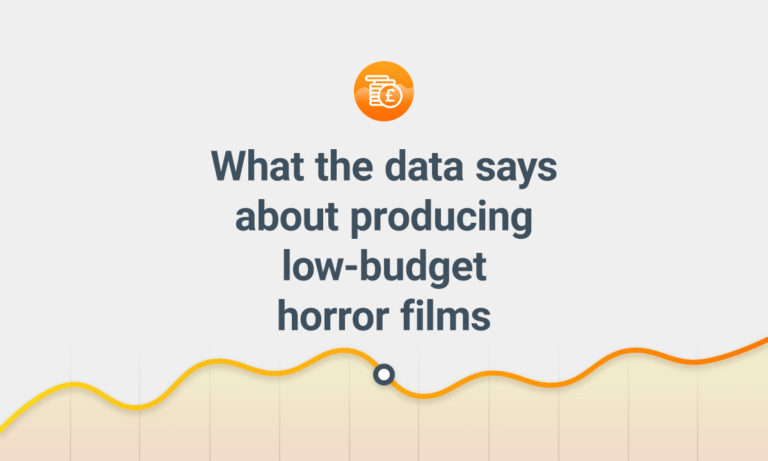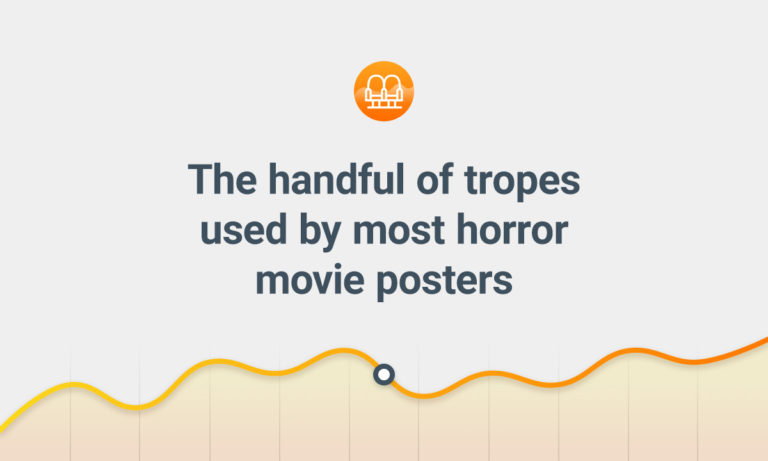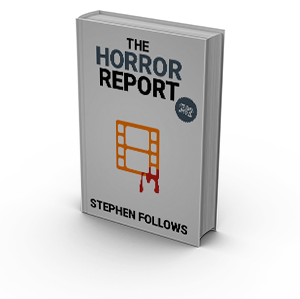 Today I am publishing a project I have been working on for well over a year. It is an extensive analysis of the horror genre, covering the entire journey from development through to recoupment.
Today I am publishing a project I have been working on for well over a year. It is an extensive analysis of the horror genre, covering the entire journey from development through to recoupment.
If you want to read the full 200+ page report, then click the button below. The report is published on a ‘Pay What You Can’ model, with a minimum of just £1.
[button color=”green” size=”large” link=”https://payhip.com/b/bVO9″]Click here to get the Horror Report[/button]
Pay What You Can model (min £1). Instant PDF download.
To celebrate the launch, I have pulled out six of the most important findings from the report. These are things that all filmmakers should be aware of, even if they don’t make horror movies, because they reveal how our industry is shifting.
1. We’re in a horror movie boom
Across all genres, film production levels have been increasing, but none faster than horror. In 2016, 1,028 horror movies were produced – twice the number made in 2006 (and the 2006 figure was almost four times more than the 1996 figure).
As well as the sheer number of horror movies increasing, horror represents an increasingly large proportion of movie production. Twenty years ago, horror movies accounted for 4% of all movies made, whereas in 2016 they represented 12%.
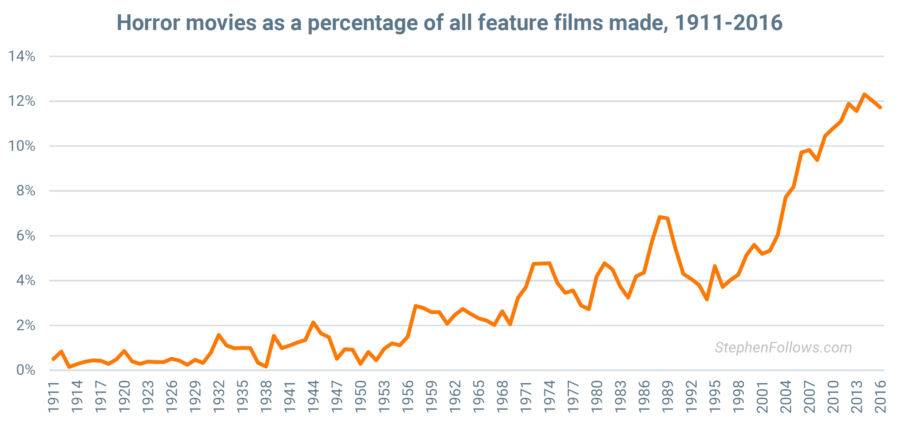
This is likely to be due to a number of factors, including:
- Technological changes which made filmmaking cheaper and more accessible. Horror films thrive on low budgets because they can be created with minimal outlay and horror audiences are very forgiving of cheap effects. As the technologies for shooting, editing and distribution reduced in price, the number of horror films increased.
- Horror has lost some of the stigma it had in the past. In the past, many studio heads and movie marketers regarded horror as a niche interest and were keen to point out that their movie was an edgy, scary thriller rather than a horror film. However, as the generation that grew up on the horrors of the 1980s came into ascendance, fewer people regarded the horror label as pejorative.
- Certain horror films have been ludicrously successful, tempting others towards the gold rush. The Blair Witch Project and Paranormal Activity have been quoted on almost every horror film business plan since they were released. And with good reason. Using data from Nash Information Services and taking into account all likely income and expenditure in the entire course of the movie’s release, it is estimated that Paranormal Activity made a producer’s net profit of around $120 million. That’s profit – not gross.
2. Horror is the most profitable genre
It’s not just Paranormal Activity that has been performing well – on average, horror movies are the most likely to make a profit when compared to movies of all other genres.
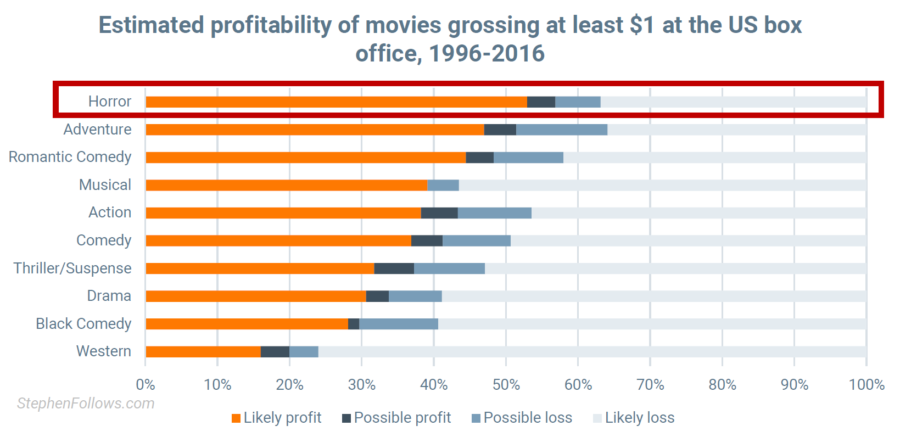
It’s also worth considering that the next most profitable genres (adventure, rom-com, musicals and action movies) typically require considerable resources or well-known actors to succeed, whereas horror movies do not. This increases the suitability of the horror genre for emerging or low-budget filmmakers.
3. Most horror movie posters conform to a small number of tropes
I built up a database of all the posters I could find for horror movies made between 1996 and 2016. I then analysed the contents of each image to look for patterns. I found that the majority of posters fell into a handful of tropes and that there was a strong correlation between the types of horror movies and the elements used.
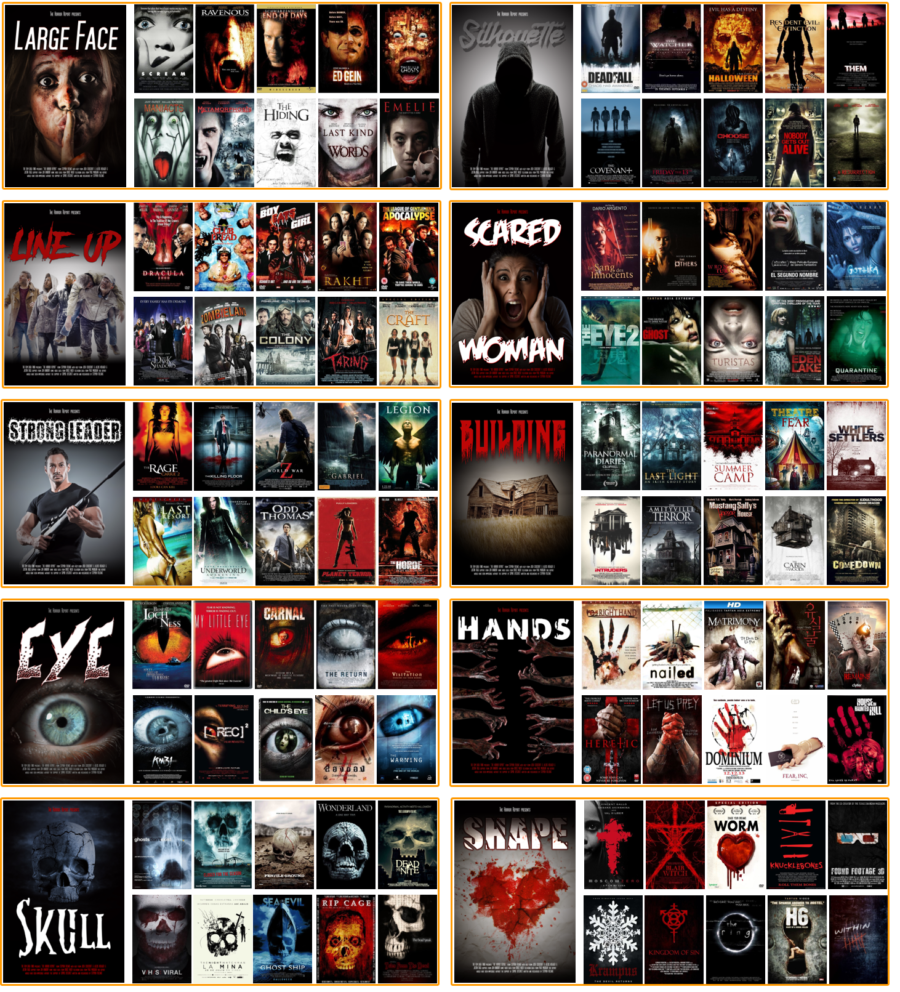
4. It doesn’t matter what film critics think of a horror movie
Of all the genres, horror is the most immune to bad reviews, with little correlation between what film critics thought of a movie and how financially successful it was.
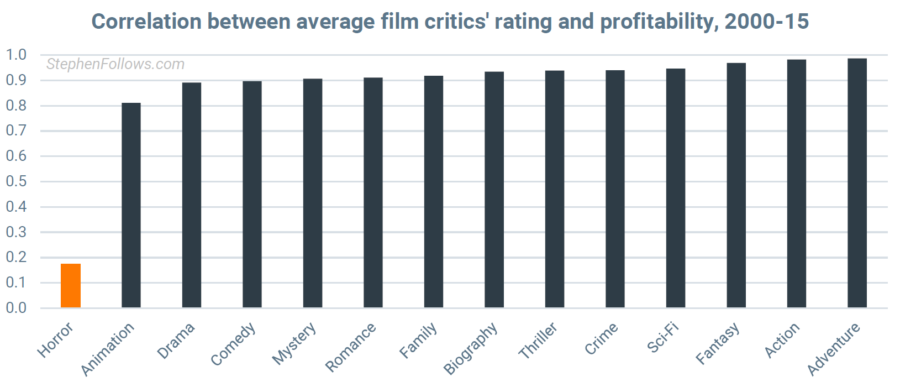
5. Horror movies are becoming less disturbing
Horror movie tastes are cyclical, with particular subsets of horror going in and out of fashion. For example, horror movies get increasingly gory and disturbing over time, until the bubble bursts and lighter horror movies return. We are currently in a relative downturn for gory and disturbing movies.
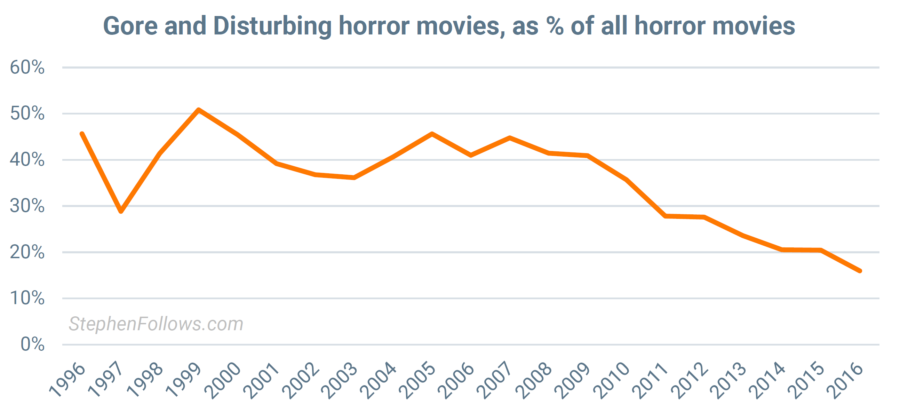
6. Video on Demand could bring trouble for horror movies
So far it’s all been good news – high profitability, predictable patterns and not having to worry about a film’s quality. But there could be trouble on the horizon for the horror sector.
Reliable VOD data is hard to come by, but the data which is available reveals that horror films perform far worse on VOD than they did on other platforms. So as the DVD and Blu-ray market share continues to drop, horror filmmakers could find that their income streams are badly hit.
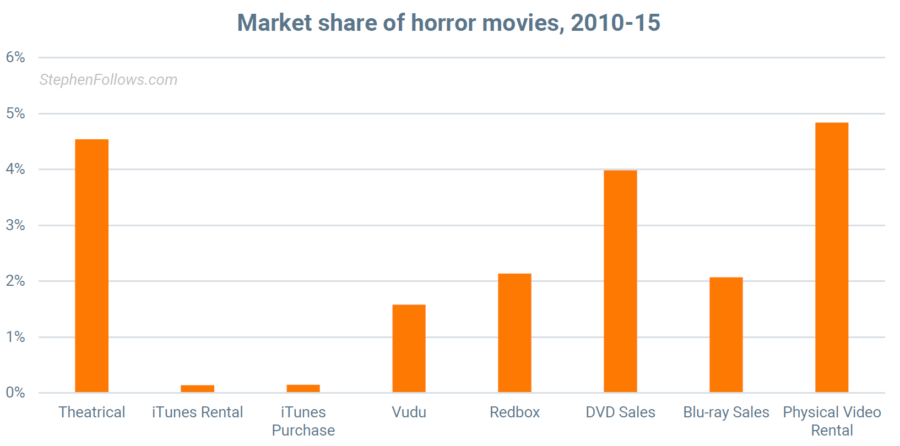
Want to know more?
 All of these findings came from the newly published Horror Report. The report also contains details on the data and methodology used.
All of these findings came from the newly published Horror Report. The report also contains details on the data and methodology used.
The report is over 200 pages of facts, stats, graphs and charts looking at all aspects of horror movies, including:[unordered_list style=”tick”]
- Development – Types of movies made, writers, sources, sequels and titles.
- Financing – Budgets, cashflow and crowdfunding.
- Cast – Ages and contingent compensation.
- Crew – Directors, producers, cinematographers, editors and crew.
- Production – Countries, shooting time, ratios, formats, cameras and runtime.
- Post-production – 3D
- Film Festivals – Horror at major festivals and top horror festivals.
- Posters – Horror movie poster tropes and their uses.
- Censorship – Around the world and levels of sex and violence.
- Film critics – Most and least horror-friendly publications and critics
- Horror audiences – Gender, age and social class.
- Theatrical – Likelihood of release, schedules, advertising, gross and international release.
- Video on Demand – Changes, prices, extra features and preferences.
- Television – Budgets, horror preferences, runtime, scheduling and sex/violence levels.
- Other Income – Soundtrack, merchandising and live cinema.
- Recoupment – Budget to box office and breakdown of Hollywood costs and income.
- Profitability – Overall and by type [/unordered_list]
The report is available to buy for whatever price you can afford.
[button color=”green” size=”large”link=”https://payhip.com/b/bVO9″]Click here to get the Horror Report[/button]
Pay What You Can model (min £1). Instant PDF download.
Why the ‘Pay What You Can’ model?
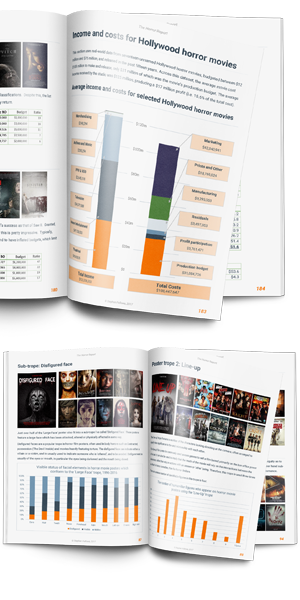 When setting a price for the report, I weighed up two opposing factors. On the one hand, I want to be able to take deep dives into topics and produce interesting results. This takes time and resources, even if I work around other projects. On the other hand, I want the findings to be available to everyone, including students and struggling filmmakers. Too much of the industry’s top analysis is hidden behind high paywalls or only available to large companies and studios.
When setting a price for the report, I weighed up two opposing factors. On the one hand, I want to be able to take deep dives into topics and produce interesting results. This takes time and resources, even if I work around other projects. On the other hand, I want the findings to be available to everyone, including students and struggling filmmakers. Too much of the industry’s top analysis is hidden behind high paywalls or only available to large companies and studios.
In the end, I settled on a Pay What You Can model as I thought it was the most flexible version to adapt to all different situations.
This report is an experiment to see if I can sustainably produce content like this on a regular basis. If every single person only pays £1 then maybe I can’t. But if some people give a little more, then this distribution model might just work. Let’s see!
Where does the money go?
100% of the money goes towards the Film Data Fund. The Film Data Fund is a nonprofit community project with the aim of encouraging more people to research and write about the film industry. You can find information about the Film Data Fund at stephenfollows.com/film-data-fund.
How can I use this report?
If you purchase a copy, you are free to use it personally. This means you can read it, learn from it and use it in private documents you are directly writing.
You may not re-publish any part of it publicly or use it within documents that will be copied more than twenty times. For example, you can use it in an essay or private business plan but not a book or magazine article. You must not share it (either for free or otherwise) with other people in your company/school/netball club, etc.
If you would like permission to use it outside of the uses listed above, please contact me. My aim with the report is to help the industry, so I am open to most sensible suggestions of additional use.
How can I get in touch?
You can use the contact form at stephenfollows.com/contact.
Please note that I cannot join horror projects as a producer or consultant as I’m afraid I don’t have the time.

